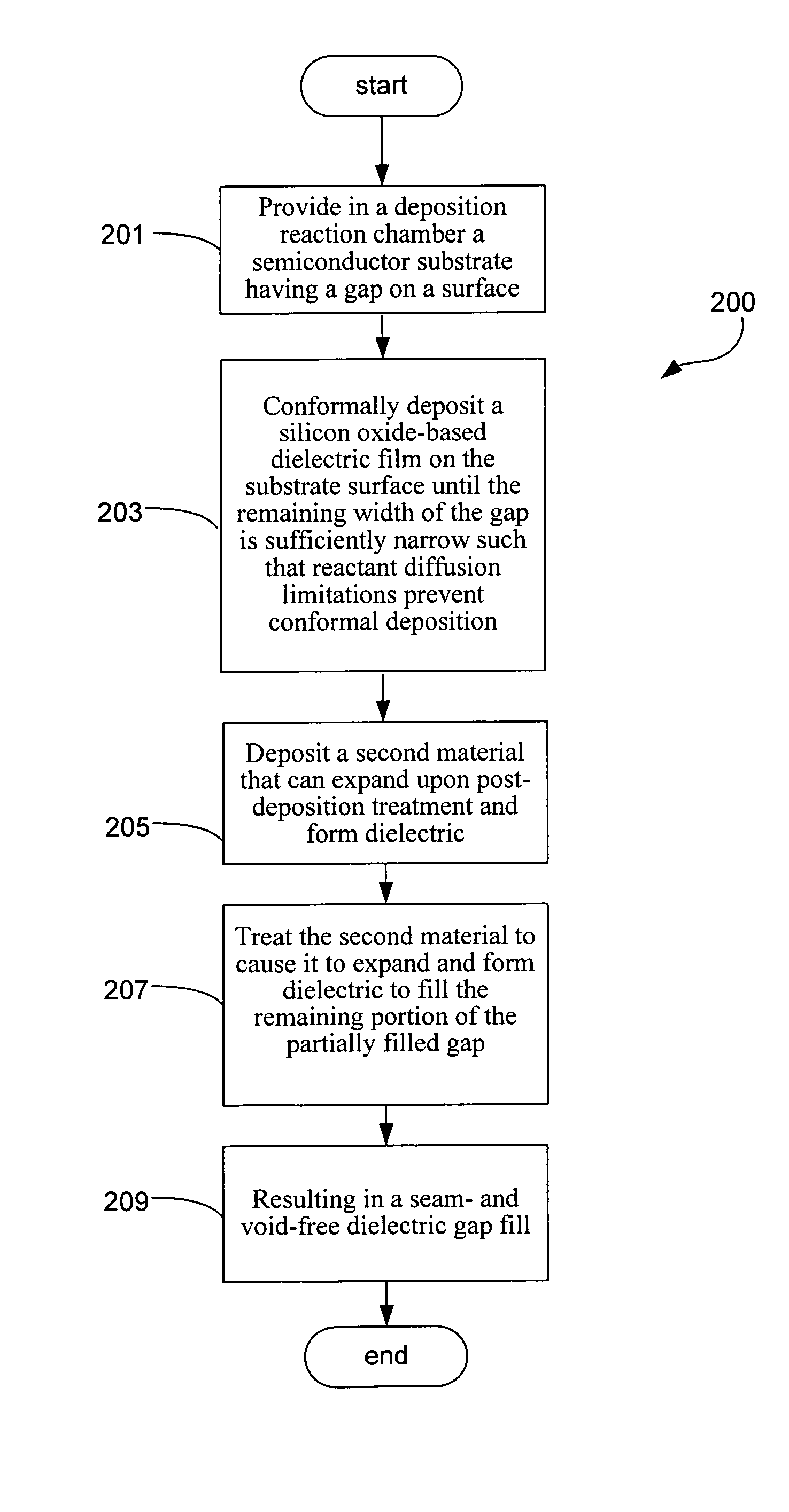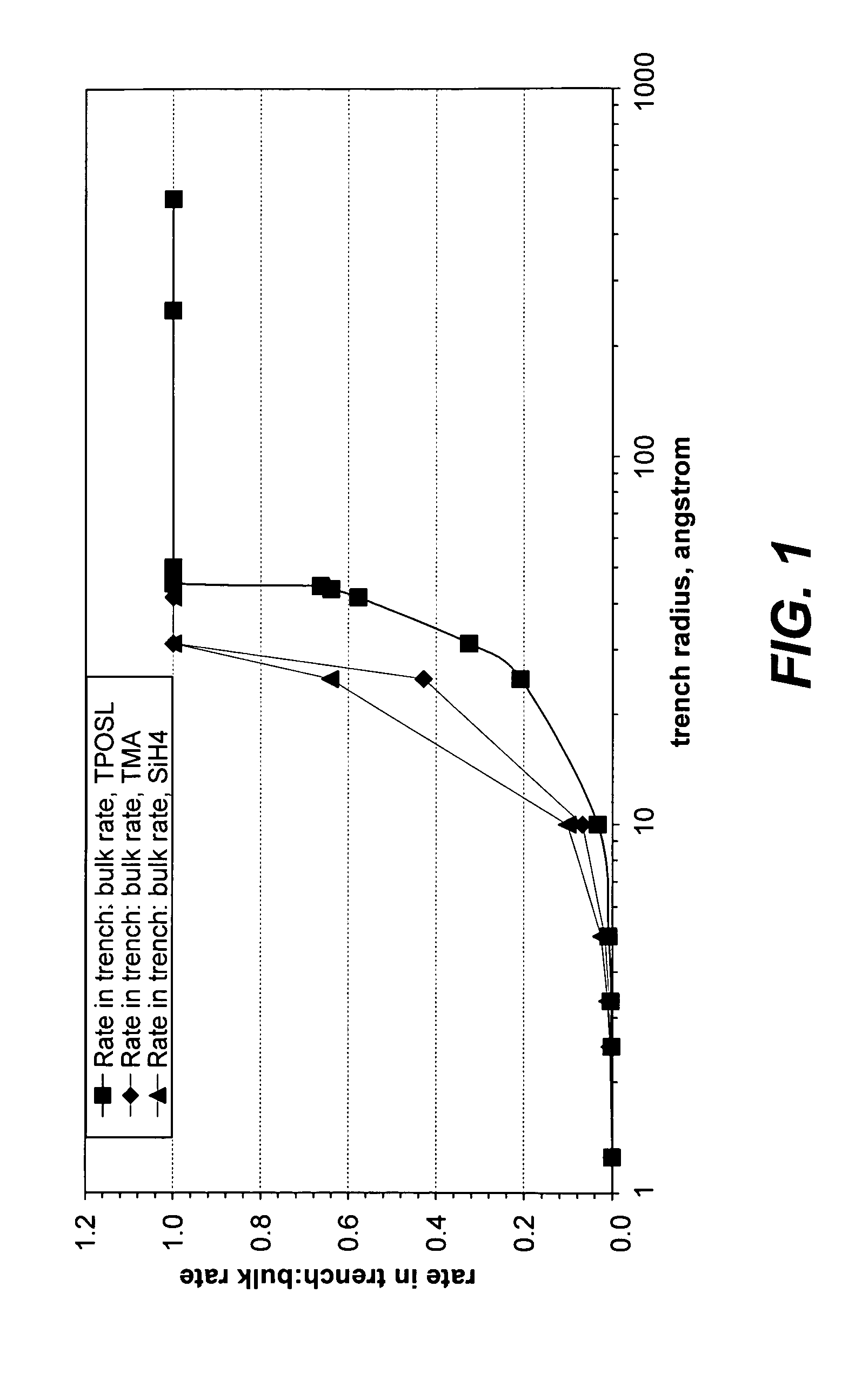Pulsed deposition layer gap fill with expansion material
a nanolaminate and expansion material technology, applied in the field of dielectric gap filling, can solve problems such as seam and void formation, achieve the effects of reducing the incidence of voids or weak spots, eliminating seams and voids, and improving the gap-fill performance of doped materials
- Summary
- Abstract
- Description
- Claims
- Application Information
AI Technical Summary
Benefits of technology
Problems solved by technology
Method used
Image
Examples
example
[0055]The following example provides details relating to the practice and advantages of a gap fill method in accordance with the present invention. It should be understood the following is representative only, and that the invention is not limited by the detail set forth in this example.
[0056]The feasibility of the method for filling gaps in accordance with the present invention was tested. The following gap fill protocol was used as then samples studied as described below:
[0057]Gaps smaller than about 75 nm wide with an aspect ratio of greater than 5:1 were partially filled with PDL oxide. PDL gapfill was conducted at 230° C. and 20 Torr, with TPOSL used for silicon oxide precursor, and TMA used to catalyze the reaction of silicon oxide formation, until a gap width of about 200-500 Å, remained unfilled. Polysilicon was deposited in the partially filled gaps by thermal CVD, operating at under 600° C. at subatmospheric pressure with SiH4 as the deposition precursor. All samples were ...
PUM
 Login to View More
Login to View More Abstract
Description
Claims
Application Information
 Login to View More
Login to View More - R&D
- Intellectual Property
- Life Sciences
- Materials
- Tech Scout
- Unparalleled Data Quality
- Higher Quality Content
- 60% Fewer Hallucinations
Browse by: Latest US Patents, China's latest patents, Technical Efficacy Thesaurus, Application Domain, Technology Topic, Popular Technical Reports.
© 2025 PatSnap. All rights reserved.Legal|Privacy policy|Modern Slavery Act Transparency Statement|Sitemap|About US| Contact US: help@patsnap.com



